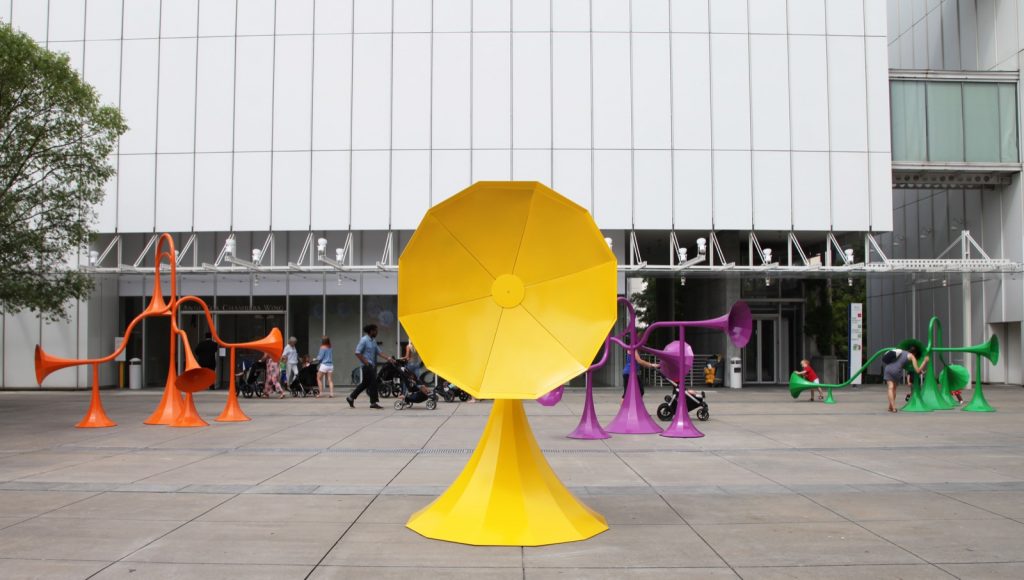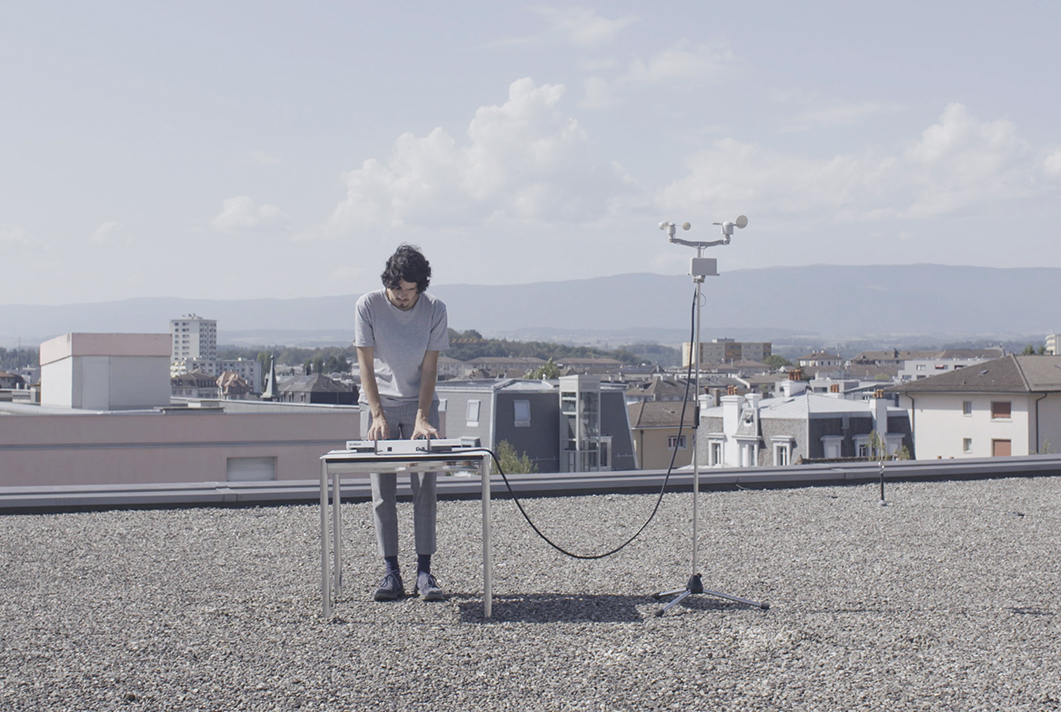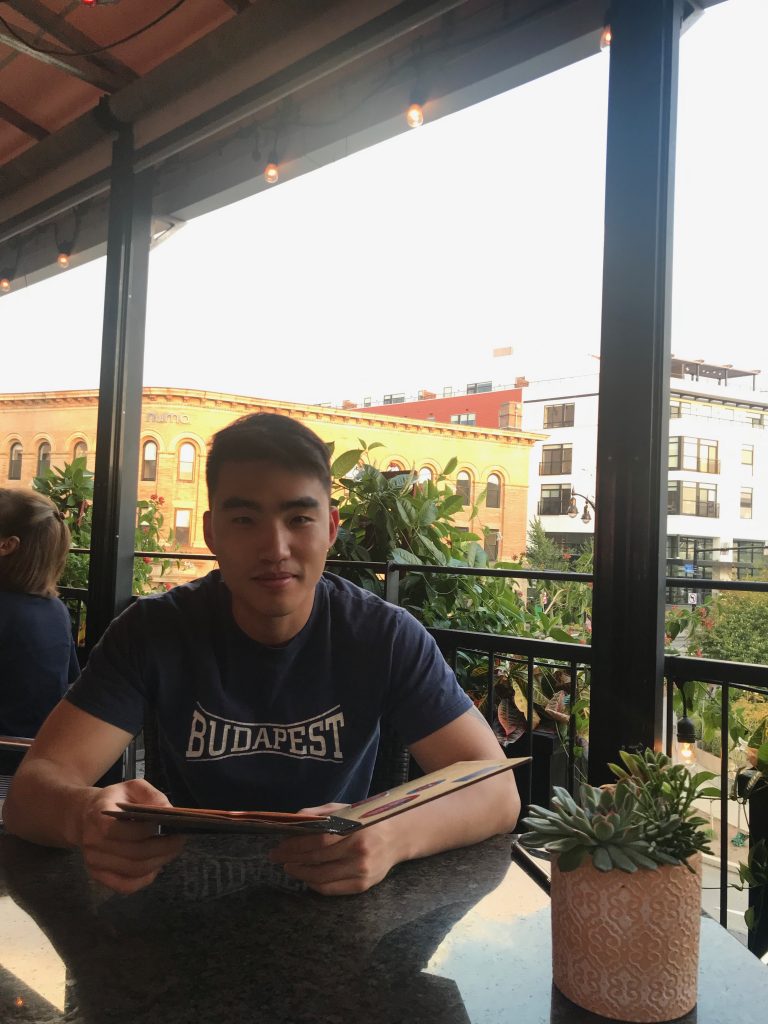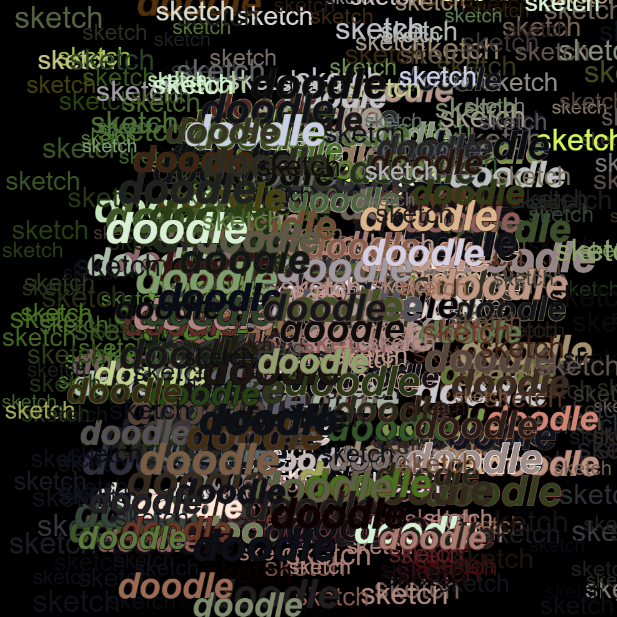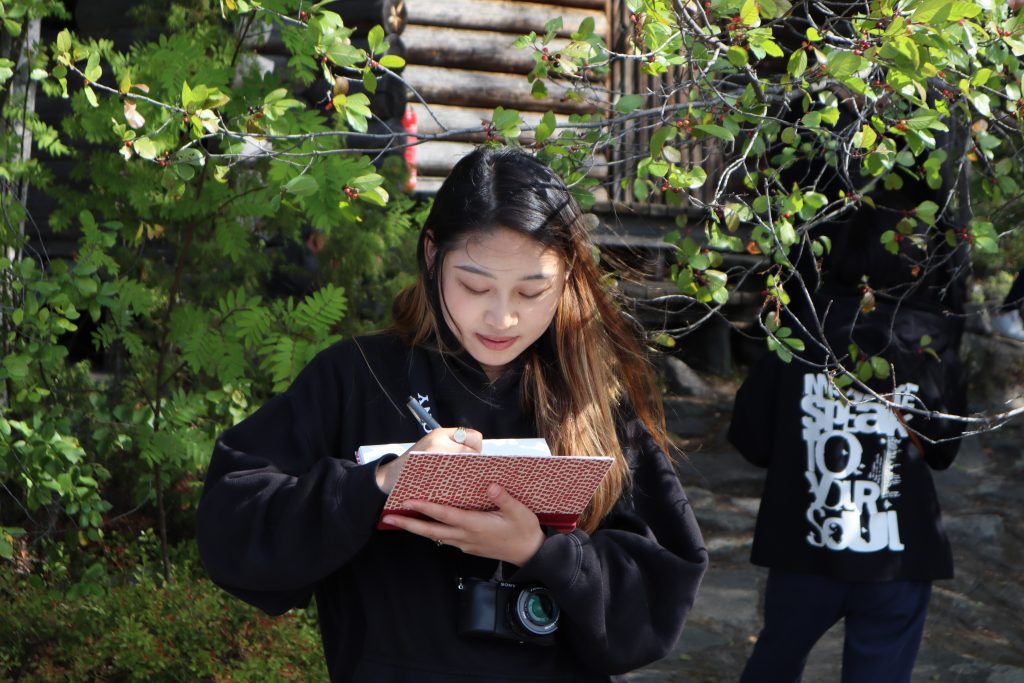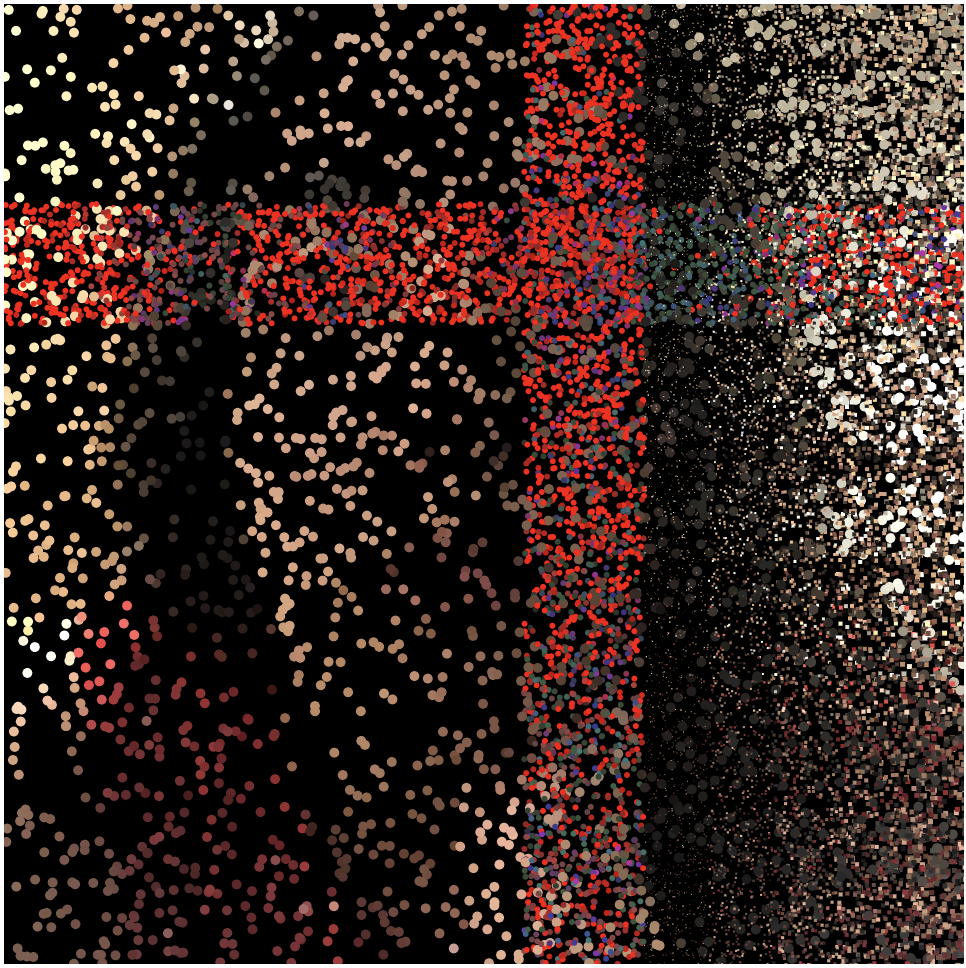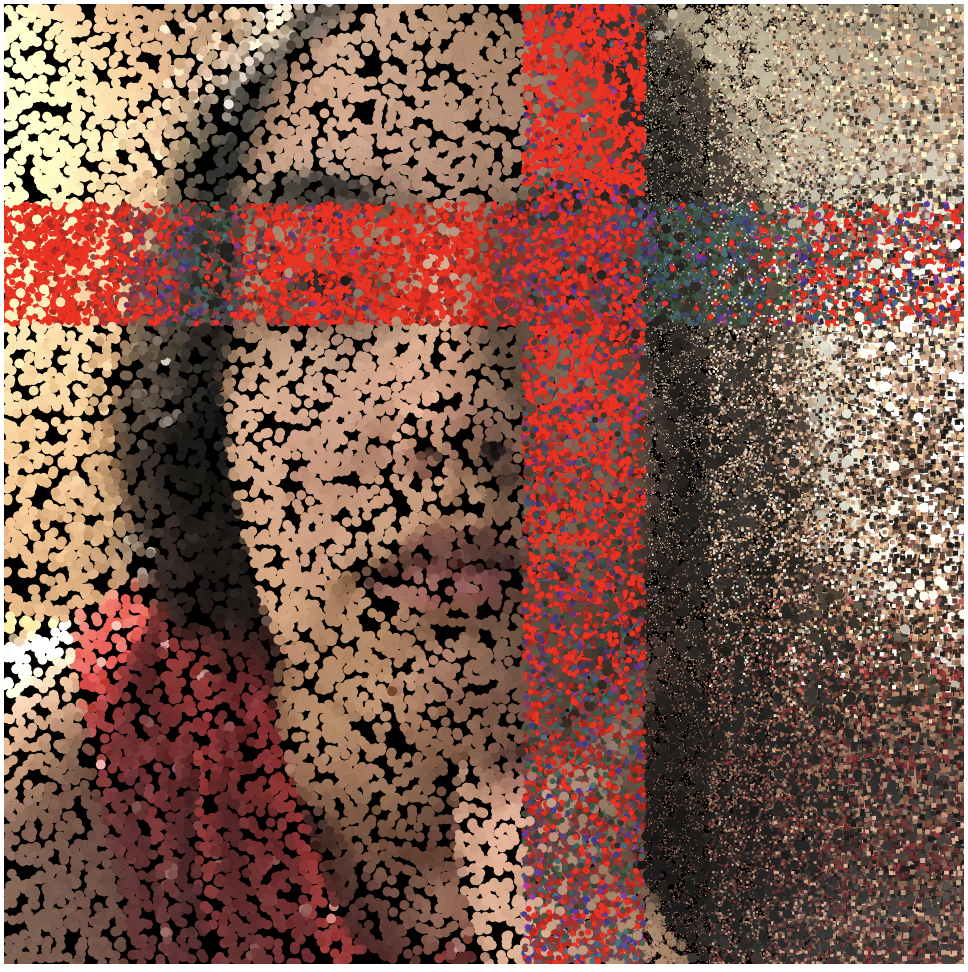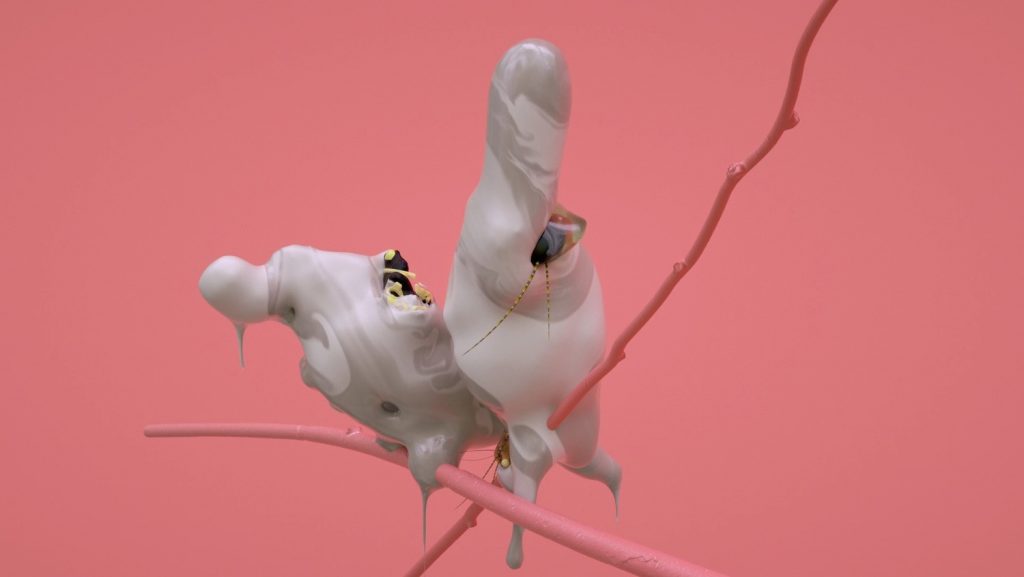//Crystal Xue
//15104-section B
//luyaox@andrew.cmu.edu
//Project-09
var underlyingImage;
var xarray = [];
var yarray = [];
function preload() {
var myImageURL = "https://i.imgur.com/Z0zPb5S.jpg?2";
underlyingImage = loadImage(myImageURL);
}
function setup() {
createCanvas(500, 500);
background(0);
underlyingImage.loadPixels();
frameRate(20);
}
function draw() {
var px = random(width);
var py = random(height);
var ix = constrain(floor(px), 0, width-1);
var iy = constrain(floor(py), 0, height-1);
var theColorAtLocationXY = underlyingImage.get(ix, iy);
stroke(theColorAtLocationXY);
strokeWeight(random(1,5));
var size1 = random(5,15);
//brush strokes from bottom left to top right diagnal direction
line(px, py, px - size1, py + size1);
var theColorAtTheMouse = underlyingImage.get(mouseX, mouseY);
var size2 = random(1,8);
for (var i = 0; i < xarray.length; i++) {
stroke(theColorAtTheMouse);
strokeWeight(random(1,5));
//an array of brush strokes from top left to bottom right diagnal direction controlled by mouse
line(xarray[i], yarray[i],xarray[i]-size2,yarray[i]-size2);
size2 = size2 + 1;
if (i > 10) {
xarray.shift();
yarray.shift();
}
}
}
function mouseMoved(){
xarray.push(mouseX);
yarray.push(mouseY);
}




This is a weaving portrait of my friend Fallon. The color pixels will be concentrated on the cross between strokes of two directions
![[OLD FALL 2019] 15-104 • Introduction to Computing for Creative Practice](../../../../wp-content/uploads/2020/08/stop-banner.png)

